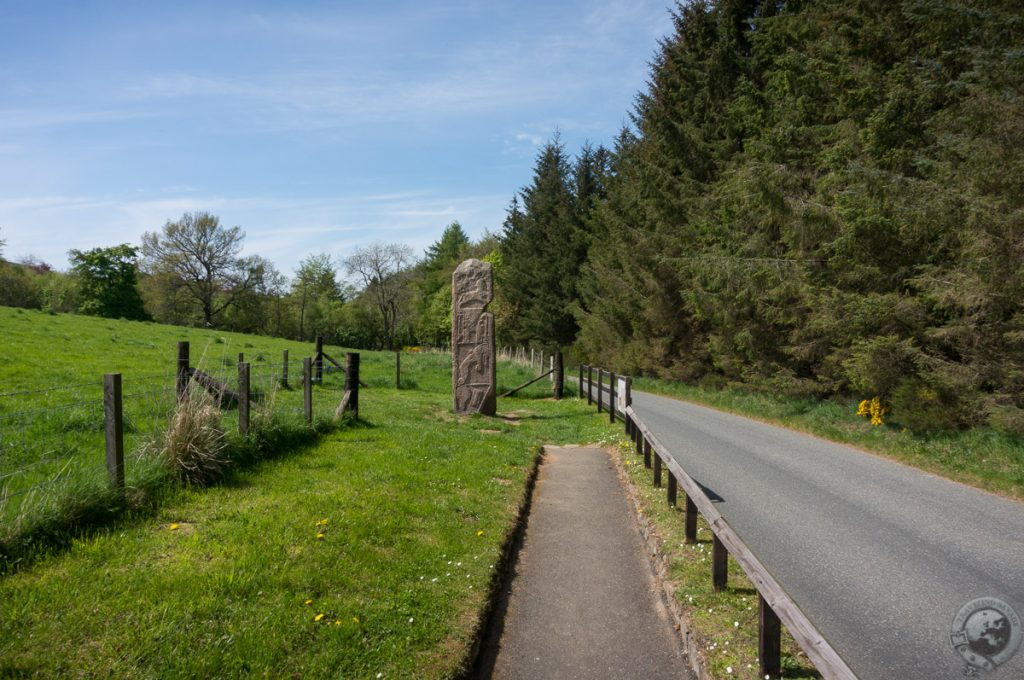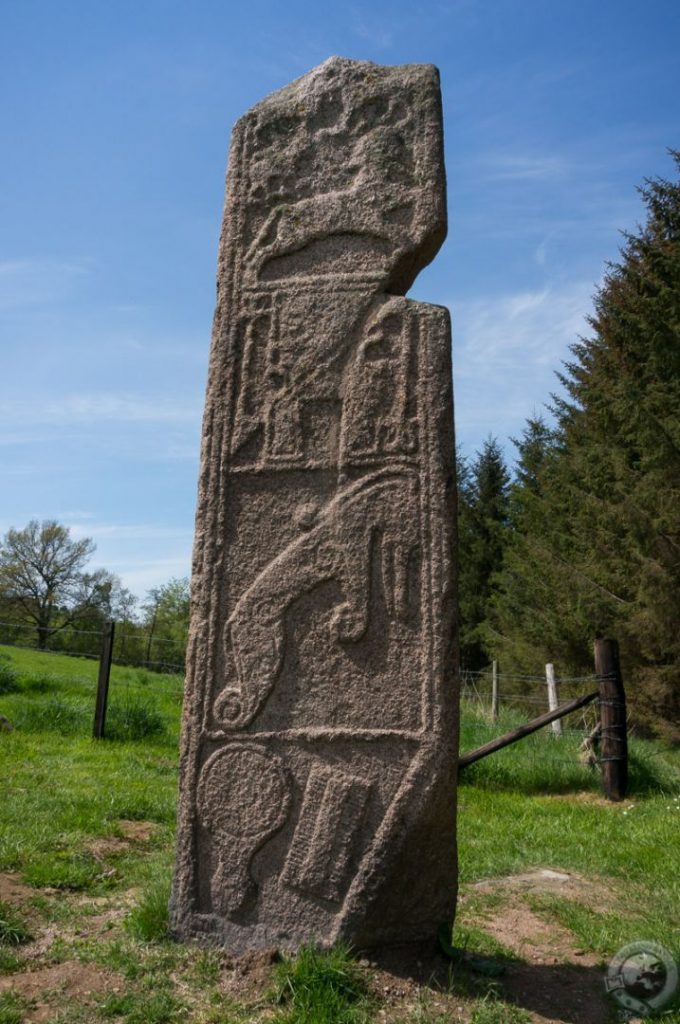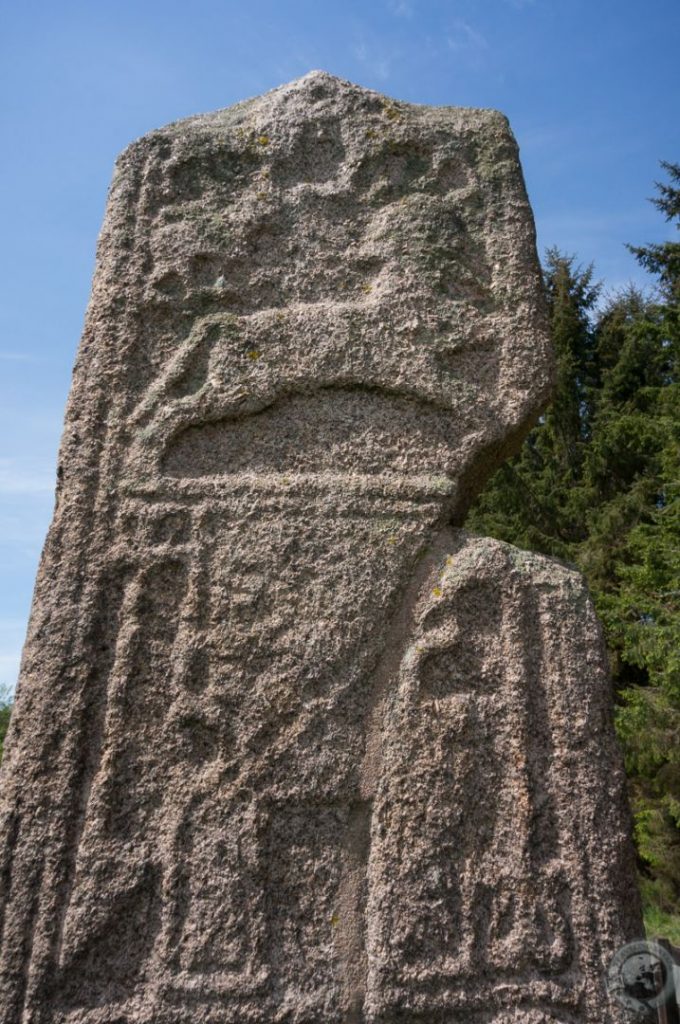My last exploration of Scotland included dedicated time in Aberdeenshire, and I was swiftly reminded how incredible the countryside is at juxtaposing ancient history with pastoral farmland and pasture. That might sound like a weird thing to exclaim as “incredible,” but I’m from Wisconsin where our farm fields only have other farm fields between them. In Aberdeenshire, dozens — more than a hundred even — standing stones and stone circles have stood the test of time as the environment changed all around. Now, sites like South Ythsie stand on grassy hills, in the corners of farms, and alongside roads, and among the most majestic of such artifacts is the subject of today’s missive: The Maiden Stone.
This wonderful sculptured stone stands near Chapel of Garioch on a backroad just off the A96 between Inverurie and Huntly in northeastern Scotland. This road meanders between pastures and forested hedges before the striking eminence of the Maiden Stone appears incongruously adjacent the road. If you didn’t know any better, you might zip by with the fleeting thought that you’d just seen a dinosaur. A small parking area is supplied to make visiting the stone easy. I was the only soul when I stopped on a sunny May day.
The Maiden Stone is a 3m-tall slab of red granite, one of the tallest such stones in existence, inscribed with traditional Pictish symbols and Christian iconography. This artistic composition aids in dating the stone to sometime after AD 700 when the Picts had begun converting to Christianity, and prevailing thought is that it was carved during the AD 800s.
It appears that all four sides of the stone were carved, though time and weather have taken their toll. Still, the east or “back” side of the stone remains in remarkable condition with four panels featuring a centaur and other animals, a Pictish beast, a Z-rod design, and a mirror and comb above a small Ogham inscription (Ogham is the written “stick” language of the druids). This is where the Pictish mystique waxes — we don’t understand what many of these symbols represent. We call them names like “Z-rod,” “mirror,” and “comb,” but these are ancient carvings viewed through a modern lens and our naming conventions may be completely off base.
The “front” or west side of the Maiden Stone is considerably more weathered and more Christian. A figure that could be Jesus or a saint like Columba stands above a Celtic cross between two sea monsters. Intricate scroll- and knotwork surround the cross and lie beneath it, but the carvings here are heavily eroded and difficult to discern in all but the most perfect light. The narrow north and south sides have carved knotwork but suffer from erosion as well.




I haven’t seen the Maiden Stone but we did visit the awesome Pictish carved stone museum in Miegle during our visit to Scotland last year. We bought a book at the museum that had sketches of all the Pictish symbols on the stones so that you could visualize them better. We also saw the linear cemetery with standing stones and cairns in Kilmartin Glen. Scotland has such fascinating history!
I visited the Meigle Museum this past May Theresa and completely agree. Just a beautiful little place in the Angus countryside. If you like this kind of thing you ought to consider visiting Aberdeenshire — the history is everywhere!
I had the pleasure of visiting the Maiden Stone, among others, on our drive from Huntley to Aberdeen. There are so many beautiful Pictish monuments in that area!